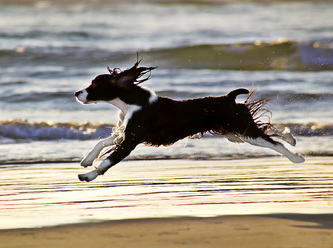| A very interesting paper just out argues that the "one gene, phenotype or disease concept" approach to our genetic testing programs is overly-simplistic. In fact, we are finding that a mutation in a single gene can cause multiple disorders, depending not only on environmental factors but also on the "genetic environment" - the other genes in that individual. A disease-causing mutation might result in a problem only in a subset of individuals that also carry some other modifying genes that interact in ways that alter expression of the trait. The label we have for this is "penetrance", which is really a polite way of saying that a mutation is not the single cause and we don't know what other environmental or genetic factors might also be in play. |
The notion that we can solve the problems of canine genetic diseases, even those thought to be caused by simple monogenic mutations, is misguided. The health status of a dog is not the sum of its known mutations. The physiological and biochemical process behind every trait and function are complex, and the genes and other factors that influence their expression are even more so.
Breeding against specific disorders is not the path to achieving healthy dogs. We must take a larger, more wholistic view, recognizing that we don't understand all of the genetic and environmental factors that might interact in extremely complex ways. If we want to achieve health, we need to breed for the health of the whole dog.
Take a few minutes and read this thought-provoking paper. It might make you see the path towards truly healthy dogs in a very different way. You can download a copy below.
| katsanis_2016_the_continuum_of_causality_in_human_genetic_disorders.pdf |
Turba ME, R Loechel, E Rombola, GGandini, & F Gentilini. 2016. Evidence of a genomic insertion in intron of SOD1 causing allelic drop-out during routine diagnostic testing for canine degenerative myelopathy. Anim Gen; doi: 10.1111/age.12525
ICB's online courses
*******************
Join our Facebook Group
ICB Breeding for the Future
...the science of dog breeding
*******************
Visit our Facebook Page
ICB Institute of Canine Biology
...the latest canine news and research


